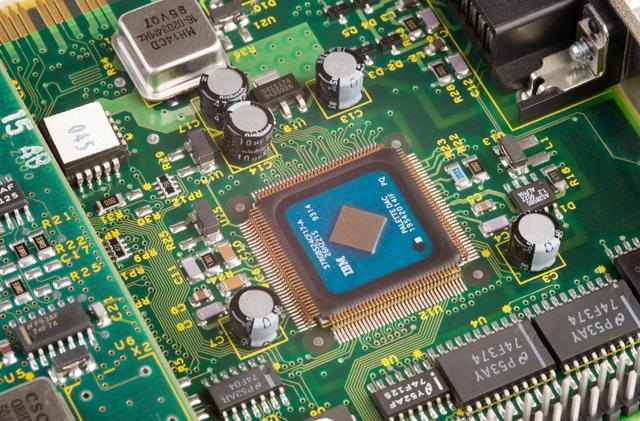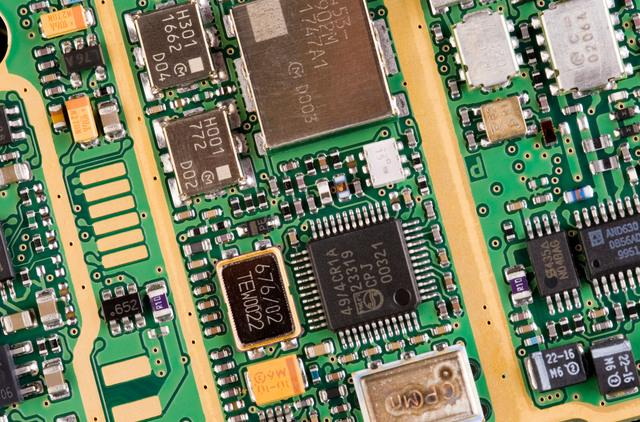Content Menu
● Understanding SMT Line Configuration
● Factors Influencing Production Costs
>> 1. Initial Setup Costs
>> 2. Production Volume
>> 3. Labor Costs
>> 4. Material Costs
>> 5. Maintenance and Downtime
● Optimizing SMT Line Configuration for Cost Reduction
>> 1. Investing in Automation
>> 2. Streamlining Workflows
>> 3. Utilizing Advanced Technologies
>> 4. Choosing Flexible Configurations
● Additional Considerations for Cost Management
>> 1. Energy Consumption
>> 2. Quality Control Measures
>> 3. Supplier Relationships
>> 4. Training and Skill Development
>> 5. Regulatory Compliance Costs
● Conclusion
● FAQ
>> 1. What is an SMT line?
>> 2. How does automation affect labor costs in SMT lines?
>> 3. What are some common challenges with SMT line configurations?
>> 4. How do material choices impact production costs?
>> 5. Why is regular maintenance important for an SMT line?
● Citations:
Surface Mount Technology (SMT) has revolutionized the electronics manufacturing industry, enabling efficient assembly of electronic components onto printed circuit boards (PCBs). The configuration of an SMT line plays a critical role in determining production costs, influencing various factors such as labor, material usage, and overall efficiency. This article delves into how different SMT line configurations can affect production costs, highlighting key components and strategies for optimizing cost-effectiveness.

Understanding SMT Line Configuration
An SMT line is a fully automated production system designed for high-volume manufacturing of electronic devices. It consists of several interconnected machines that perform specific tasks in the assembly process. The typical configuration includes:
- Solder Paste Printer: Applies solder paste to the PCB.
- Pick-and-Place Machine: Accurately places components onto the soldered areas.
- Reflow Oven: Melts the solder paste to bond components to the PCB.
- Inspection Systems: Ensure quality control through automated optical inspection (AOI) and functional testing.
The configuration of these machines can vary significantly based on the desired production volume, product complexity, and budget constraints.
Factors Influencing Production Costs
Several factors influence how SMT line configuration affects production costs:
1. Initial Setup Costs
The initial investment in an SMT line can be substantial. High-speed pick-and-place machines can account for 60-70% of the total setup cost. For instance, a high-capacity machine may cost upwards of $700,000, while mid-range options can range from $100,000 to $200,000. Additionally, other equipment such as reflow ovens and inspection systems add to the overall expenditure.
2. Production Volume
The volume of production significantly impacts per-unit costs. Higher production volumes typically reduce costs due to economies of scale. A well-configured SMT line can produce more units in less time, leading to lower labor and material costs per unit. For example, larger batch sizes allow for standardized workflows and reduced changeover times, enhancing efficiency.
3. Labor Costs
Automation in SMT lines reduces labor costs by minimizing human intervention in the assembly process. A well-configured line can operate with fewer operators while maintaining high output levels. However, initial training and ongoing skill development for operators are essential to ensure efficient operation and minimize errors.
4. Material Costs
The choice of materials used in the SMT process also affects production costs. Components sourced from reliable suppliers at competitive prices can significantly lower expenses. Moreover, using advanced solder pastes and high-quality components can enhance yield rates, further reducing costs associated with defects and rework.
5. Maintenance and Downtime
Regular maintenance is crucial for minimizing downtime and ensuring consistent production quality. A well-configured SMT line should incorporate preventive maintenance schedules to avoid unexpected breakdowns that can lead to costly delays. Additionally, investing in high-quality machinery may reduce long-term maintenance costs.
Optimizing SMT Line Configuration for Cost Reduction
To achieve cost savings through effective SMT line configuration, manufacturers can implement several strategies:
1. Investing in Automation
Automating processes such as solder paste application and component placement can significantly enhance efficiency and reduce labor costs. While the initial investment may be high, automation typically leads to long-term savings by increasing throughput and minimizing errors.
2. Streamlining Workflows
Optimizing workflows within the SMT line can lead to reduced cycle times and improved productivity. Implementing lean manufacturing principles helps identify wasteful processes that can be eliminated or streamlined.
3. Utilizing Advanced Technologies
Incorporating Industry 4.0 technologies such as IoT and data analytics allows manufacturers to monitor production processes in real-time, facilitating quick adjustments that optimize efficiency and reduce costs.
4. Choosing Flexible Configurations
Configuring an SMT line to accommodate various product types allows manufacturers to adapt quickly to changing market demands without incurring significant reconfiguration costs.

Additional Considerations for Cost Management
Beyond the primary factors discussed above, several additional considerations can further influence the cost-effectiveness of an SMT line:
1. Energy Consumption
SMT lines consume a significant amount of energy, particularly during processes like reflow soldering. Energy-efficient equipment can help mitigate these costs over time by reducing overall energy consumption during production runs.
2. Quality Control Measures
Implementing rigorous quality control measures can prevent costly defects that arise from poor assembly practices or faulty components. Automated inspection systems can detect issues early in the process, reducing scrap rates and improving overall yield.
3. Supplier Relationships
Building strong relationships with suppliers is vital for securing favorable pricing on materials and components. Bulk purchasing agreements can lead to significant savings that contribute positively to overall production costs.
4. Training and Skill Development
Investing in training programs for staff operating the SMT lines ensures they are skilled in using advanced technologies effectively while also understanding best practices for minimizing errors during assembly.
5. Regulatory Compliance Costs
Adhering to industry standards and regulations may incur additional costs related to certification or compliance measures but is essential for maintaining product quality and safety standards.
Conclusion
The configuration of an SMT line plays a pivotal role in determining production costs within the electronics manufacturing sector. By understanding the factors that influence these costs—such as initial setup expenses, labor requirements, material sourcing, maintenance needs, energy consumption, quality control measures, supplier relationships, training programs, and regulatory compliance—manufacturers can make informed decisions that enhance efficiency and profitability.
Investing in automation and advanced technologies while streamlining workflows are effective strategies for optimizing SMT line configurations. Ultimately, a well-configured SMT line not only reduces production costs but also improves product quality and accelerates time-to-market.

FAQ
1. What is an SMT line?
An SMT line is an automated system used for assembling surface mount devices onto printed circuit boards (PCBs). It consists of various machines that perform tasks such as solder paste printing, component placement, reflow soldering, and inspection.
2. How does automation affect labor costs in SMT lines?
Automation reduces labor costs by minimizing human intervention during assembly processes. Fewer operators are needed to manage automated machines compared to manual assembly lines.
3. What are some common challenges with SMT line configurations?
Common challenges include high initial setup costs, maintenance requirements, ensuring consistent quality control, managing supply chain issues for materials, and adapting to varying production volumes.
4. How do material choices impact production costs?
Material choices directly affect production costs through pricing fluctuations based on market demand and supplier relationships. High-quality materials may incur higher upfront costs but often lead to better yield rates and fewer defects.
5. Why is regular maintenance important for an SMT line?
Regular maintenance is essential for preventing unexpected breakdowns that can lead to costly downtimes and disruptions in production flow. It ensures that all equipment operates at optimal performance levels.
Citations:
[1] https://www.ipcb.com/pcba-tech/8216.html
[2] https://www.hayawin.com/resources/smt-line-an-efficient-and-cost-effective-production-line.html
[3] https://www.smtfactory.com/Exploring-SMT-Line-Cost-Factors-and-Savings-id43117676.html
[4] https://www.ipc.org/system/files/technical_resource/E9&S06_02.pdf
[5] https://reprosupplies.co.za/what-factors-influence-the-cost-of-an-smt-assembly-project/
[6] https://www.smtfactory.com/Optimizing-Efficiency-Strategies-for-A-Smooth-SMT-Line-Production-Process-id47463586.html
[7] https://www.swfuliusmt.com/how-much-would-it-cost-to-set-up-a-pcb-assembly-line/
[8] https://www.swfuliusmt.com/2024/07/12/understanding-smt-lines-the-backbone-of-modern-electronics-manufacturing/
[9] https://www.raypcb.com/line-efficiency/
[10] https://pcbandassembly.com/blog/smt-assembly-cost-analysis-and-optimization-strategy/




















